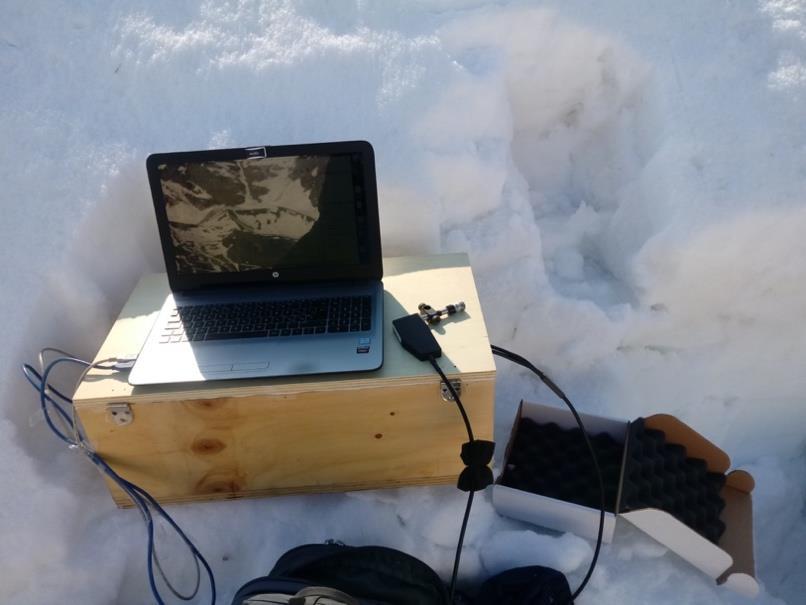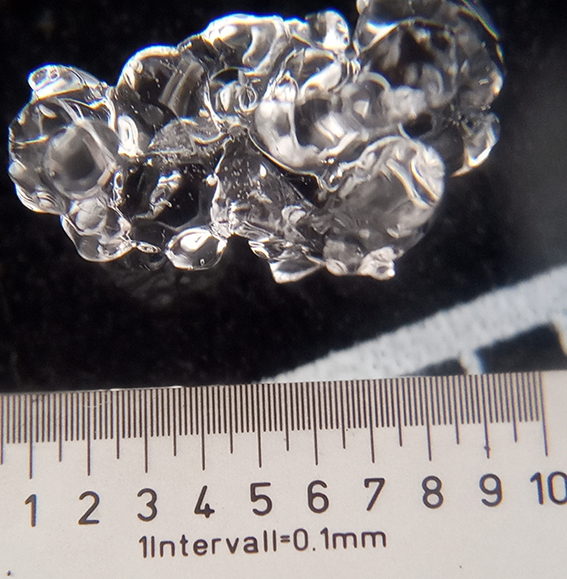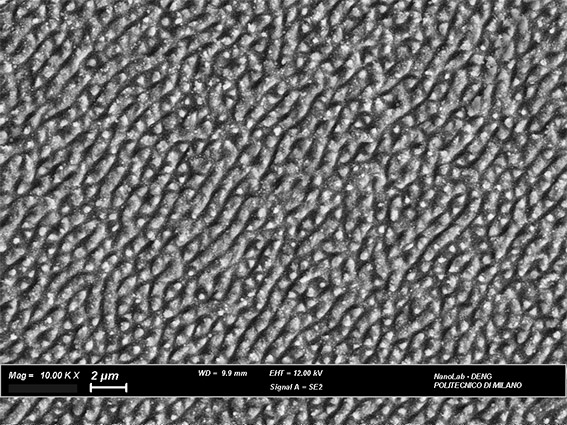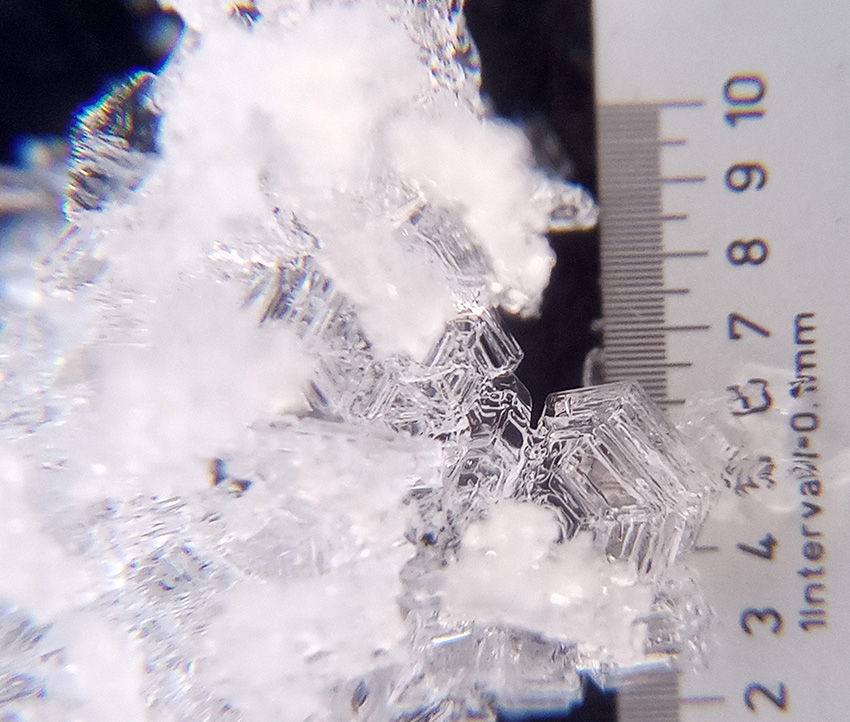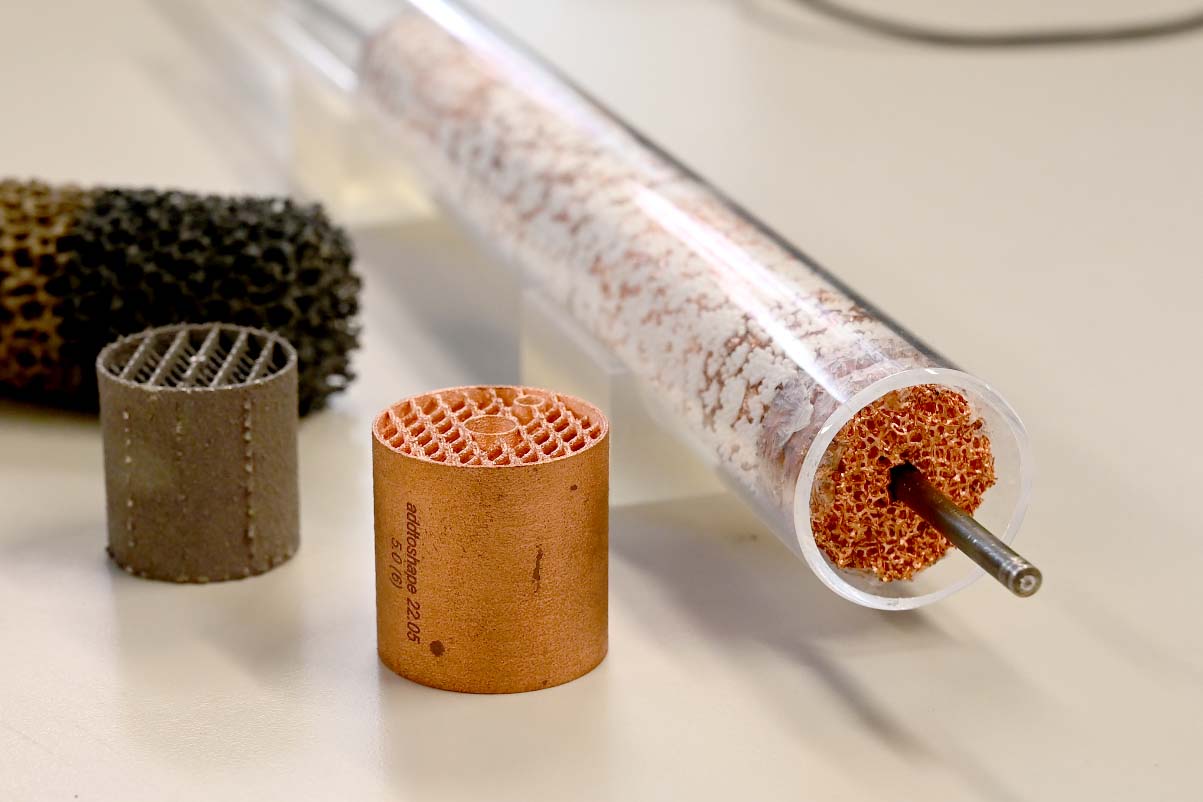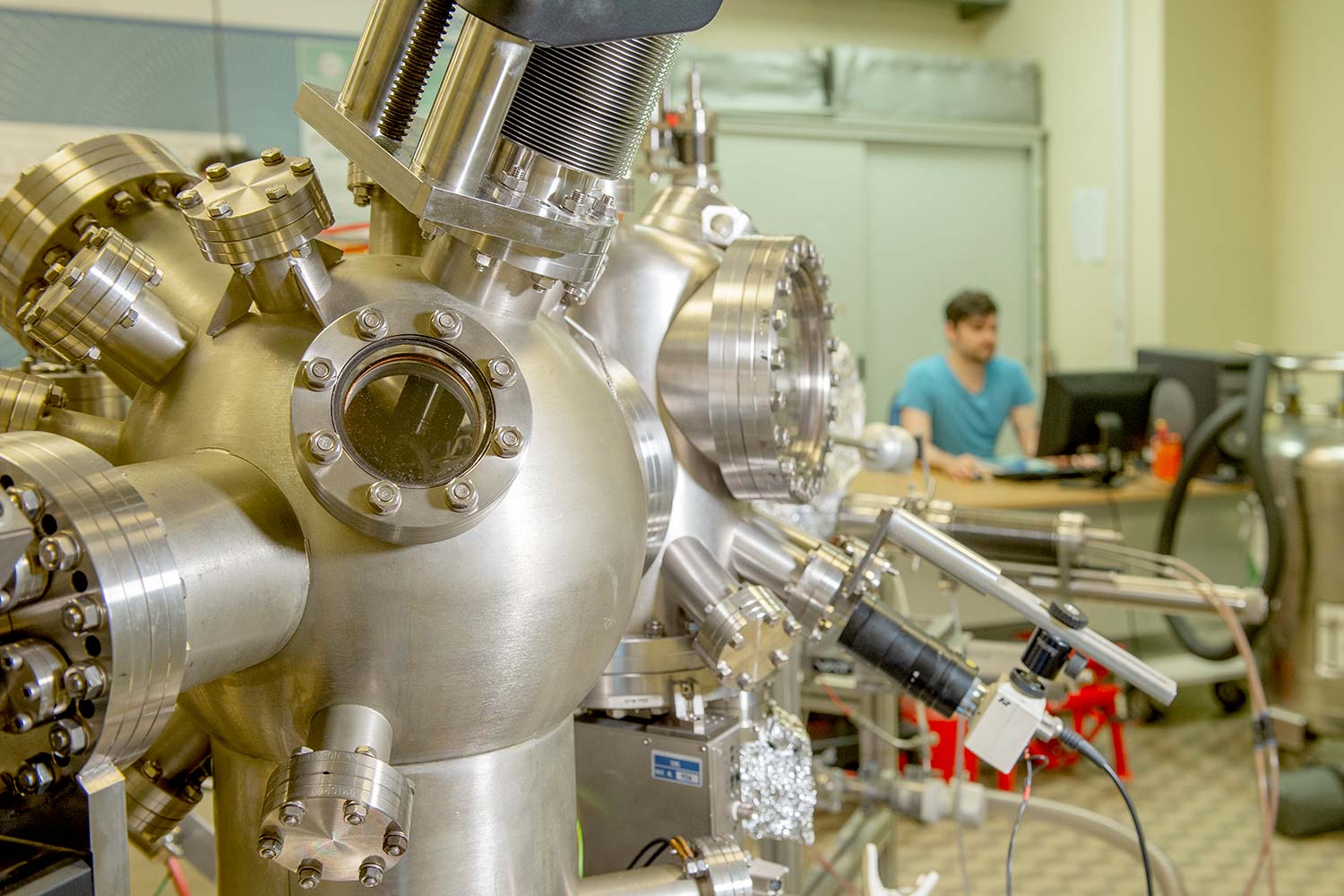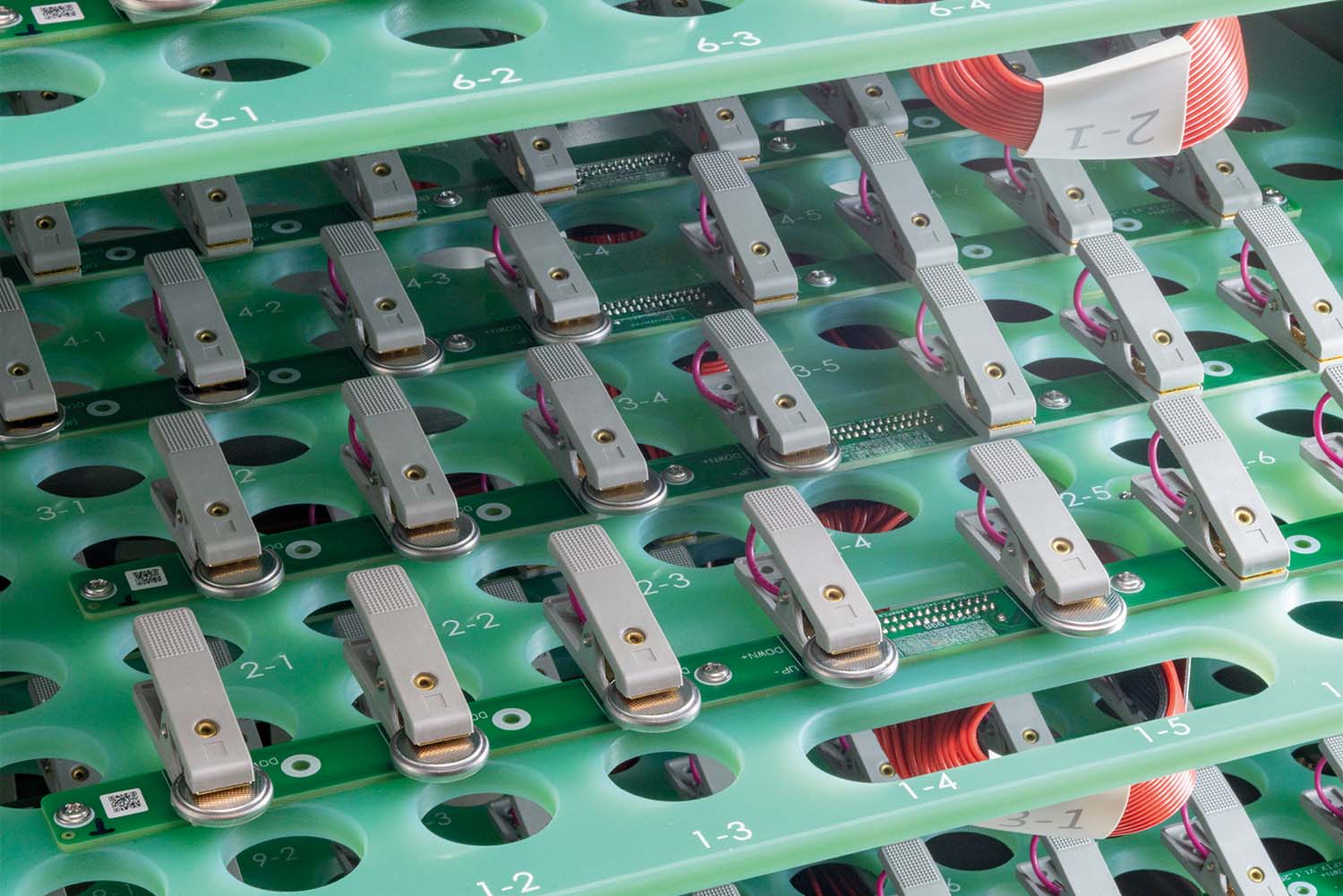Studies the metamorphism and stability of snow cover, the production and characterisation of artificial snow and products and surface treatments to reduce friction on snow and ice using traditional and innovative materials.
The Winter Sports Surfaces Laboratory (SWIS-Lab) conducts research related to snow and ice, their properties and their use. The research activities focus on:
- the role of surfaces in the evolution (metamorphism) of natural and artificial snow crystals (produced by industrial snow cannons) subjected to solar radiation (UV) and the action of environmental agents (temperature and its gradients, wind, water, debris deposited on the snowpack): analysis using Raman spectroscopy and microscopic observations.
- in situ spectroscopic analysis of snowpack stability (avalanche prevention), compared with the results of the traditional ECT-AINEVA test;
- study, through microscopy observations and vibrational spectroscopic analysis (IR; Raman) of the presence of long-lived pollutants (microplastics) deposited on the snowpack both during snowfall and by abrasion from the bases of Nordic, alpine and ski mountaineering skis; these are made of ultra-high molecular weight polyethylene (UHMWPE) with added carbon compounds.
- production of artificial snow in extreme conditions, its characterisation (morphology; structure) and study of morphological evolution as a function of temperature and solar radiation (UVA, UVB radiation simulated with UV lamp);
- study of the tribological properties (measurement of the dynamic friction coefficient for sliding) of different types of snow, up to compact ice, at different temperatures, on which controlled samples of different materials (focus on UHMWPE and high-hardness stainless steel) are slid, whose surfaces are variously prepared morphologically and/or chemically (newly developed non-fluorinated additives). These measurements are carried out using a specially designed and manufactured snow tribometer with a circular track (diameter: 60 cm) on which the sample (dimensions: 5x5x0.5cm3) loaded in such a way that the normal force is the same as that exerted on the surface of its equipment by a skier weighing 80 kg during a straight descent. Observation of the morphology of the snow crystals on the track (stereomicroscope) and the surface microstructure (using SEM) of the samples used in the tests complete the tribological measurements.
Main collaborations
- Molecular Spectroscopy Laboratory, c/o FUNMAT-Lab, Department of Chemistry, Materials, Chemical Engineering “G. Natta” Politecnico di Milano
- Laser Plasma Laboratory for Materials Diagnostics and Nanoparticle Generation, Institute for Chemical-Physical Processes IPCF-CNR, Messina
- Photonics Processing of Advanced Materials Group, National Institute for Laser, Plasma and Radiation Physics – NILPRP, Bucharest (Romania)
- Clinical Pathology and Medical Genetics Laboratory, IRCCS C. Besta Neurological Institute Foundation, Milan
- Monterosa S.p.A., Champoluc (AO)
- Italian Winter Sports Federation, FISI-ASIVA Valdostano Regional Committee
- Penz s.r.l., Prata Camportaccio (SO)
- MAFLON SPA, Castelli Calepio (BG)
- Kirana s.r.l., Rovereto (TN)
Location
Politecnico di Milano – Department of Energy – La Masa Campus
via Lambruschini, 6 (EN:lab building BL31) 20156 Milan
Scientific Manager
Prof. Andrea Li Bassi
+39 02 2399 6316
Email: andrea.libassi(at)polimi.it
Staff
Li Bassi Andrea
Full Professor
andrea.libassi(at)polimi.it
+39 02 2399 6316
Learn more
